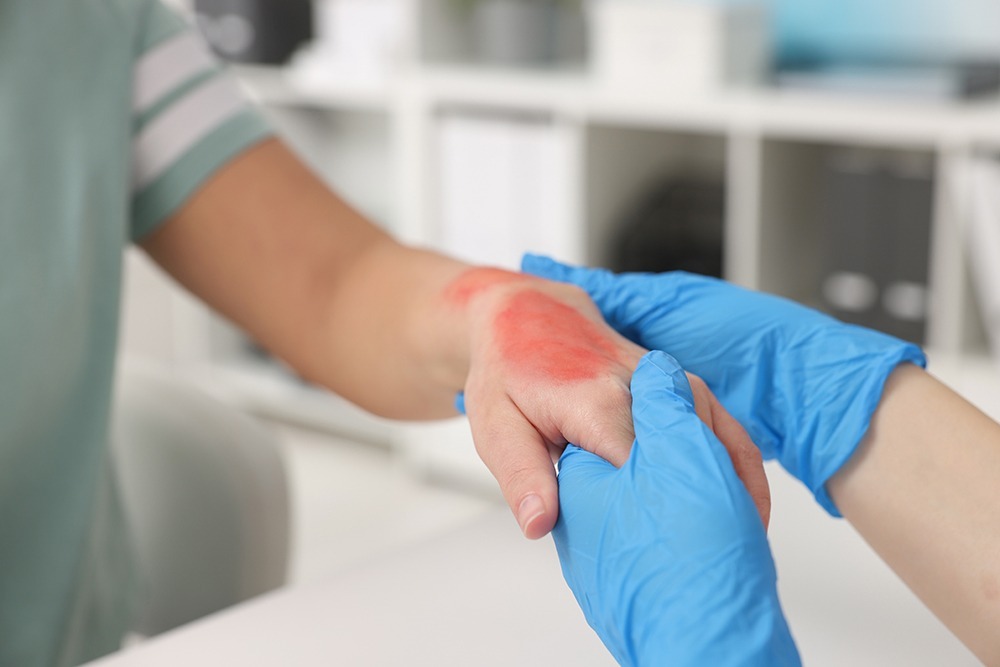The Hidden Dangers Behind Burn Injuries—and How to Fight Back Legally
Share:
Burn injuries are among the most catastrophic and life-altering traumas a person can experience. They’re not just skin-deep—they can affect every aspect of your life. From severe pain and disfigurement to nerve damage, emotional trauma, and long-term disability, the impact of a burn can be permanent.
In the U.S., hundreds of thousands of people are treated for burns each year, with over 40,000 requiring hospitalization. For many victims, these injuries aren’t just accidents—they’re the result of someone else’s negligence. Whether the burns occurred on the job, at home, on the road, or due to a defective product, you may be entitled to substantial compensation.
In this guide, we’ll walk you through the most common causes of burn injuries, the types of claims victims can pursue, and what it takes to hold the responsible parties accountable.
Understanding Burn Severity
Before diving into legal recourse, it’s important to understand how burn injuries are categorized. The severity of a burn plays a major role in determining medical needs, recovery time, and potential compensation:
| Burn Type | Description | Impact |
| First-degree | Affects only the outer skin layer (e.g. mild sunburn) | Redness, mild pain |
| Second-degree | Extends into inner skin layers; blisters form | More pain, potential for scarring |
| Third-degree | Damages through all skin layers into underlying tissue | Often painless initially due to nerve damage, requires surgical treatment |
| Fourth-degree | Engages muscle and bone | Life-threatening; requires extensive medical intervention |
Severe burns can take months or years to recover from—if at all. They frequently require multiple surgeries, skin grafts, physical therapy, and psychological support.
Workplace Burn Injuries: The Hidden Dangers of High-Risk Jobs
The workplace is one of the most common settings for serious burn injuries. According to the Bureau of Labor Statistics, more than 15,000 burn-related workplace injuries are reported every year in the U.S.—but many more go unreported. High-risk job sites include:
- Industrial and construction zones – machinery malfunctions, hot surfaces, welding tools, molten materials
- Electrical work – arc flashes, live wires, faulty switchboards
- Restaurants and kitchens – fryers, scalding liquids, open flames
- Laboratories – exposure to caustic chemicals, acids, or reactive compounds
While workers’ comp can cover medical bills and lost wages, it often doesn’t fully account for long-term suffering, disfigurement, or emotional trauma. That’s where a personal injury claim comes in.
Hypothetical Example: A line cook suffers third-degree burns when a commercial fryer overheats and splashes oil, due to a broken thermostat that the manager failed to replace. In this case, the victim may have a workers’ compensation claim—and possibly a third-party personal injury claim if defective equipment or negligence is involved.
Household Burn Injuries: When Home Isn’t as Safe as You Think
Believe it or not, the majority of burn injuries happen right at home. The American Burn Association reports that more than 73% of burn incidents occur in residential settings. The most common causes?
- Grease fires while cooking
- Boiling water or hot surfaces
- Unregulated water heaters (tap water scalds are common in children and seniors)
- Space heaters and electric blankets
- Household cleaners with strong chemicals (oven cleaners, drain openers)
If your injuries were caused by a landlord’s failure to fix faulty wiring, a malfunctioning appliance, or inadequate safety measures (like smoke detectors), you could file a premises liability claim.
Safety tip: Lower your home water heater’s thermostat to 120°F or below—this simple step can cut scald risks by more than half.
Defective Products: When Design and Manufacturing Fail
Not all burn injuries are the result of a person’s actions. Sometimes, the fault lies with a defective product. Burn-related product liability cases have become increasingly common, especially as more electronics and lithium-ion battery products hit the market. Common examples of burn-inducing products:
- Exploding e-cigarettes or vape pens
- Overheating phones, laptops, or battery packs
- Hairdryers, toasters, or kitchen gadgets that catch fire
- Children’s toys made with flammable materials
- Automobile parts (gas tanks, airbags, seat heaters)
In recent years, the Consumer Product Safety Commission logged over 12,000 product-related burn incidents, yet only a fraction become lawsuits due to legal complexity.
When manufacturers fail to ensure their products are safe, they can be held strictly liable. Victims can seek damages for medical care, income loss, emotional distress, and more through a product liability lawsuit. Successful product liability cases can result in substantial compensation, often covering medical bills, lost wages, emotional distress, and future care.
Did You Know? Over 12,000 product-related burn incidents were reported to the Consumer Product Safety Commission in a recent year.
Residential Fires: Tragedy Born from Negligence
House fires are devastating—and often avoidable. Many of these incidents are caused by faulty equipment, poor wiring, gas leaks, or missing smoke detectors. Key contributors include:
- Negligent landlords who fail to install or maintain fire safety measures
- Faulty electrical systems or overcrowded circuits
- Improper storage of flammable materials
- Inadequate building codes or fire exits
Shockingly, more than 55,000 home fires per year involve cooking equipment, and half lack working smoke detectors. Victims may press premises liability claims if landlords, property managers, or neighbors contributed to unsafe conditions.
Victims injured in residential fires may be entitled to compensation under premises liability law, especially if the property owner or manager failed to meet basic safety requirements.
Car Accidents That Lead to Burns: Fuel, Fire, and Airbags
Burn injuries are also common in motor vehicle accidents. Fuel leaks, battery explosions (especially in EVs), engine fires, and even airbag deployment can cause serious burns.
Even if the fire wasn’t the direct cause of the accident, a burn injury might increase the value of your auto accident claim due to the severity of the damage.
And if the fire was caused by a vehicle defect (e.g., faulty fuel line, battery instability), a product liability claim may be filed against the car manufacturer or parts supplier.
Legal Options for Burn Victims: What You Can Do
Depending on how and where the injury occurred, burn victims may be eligible to pursue:
- Workers’ Compensation – for burns that happen on the job
- Personal Injury Lawsuits – if another person or entity was negligent
- Product Liability Claims – if a product caused the injury
- Premises Liability Claims – for burns caused by unsafe property conditions
Compensation may include:
- Emergency and long-term medical care
- Surgical treatment and skin grafts
- Rehabilitation and physical therapy
- Lost income and reduced earning capacity
- Emotional distress and pain
- Disfigurement or permanent disability
- Home care or accessibility renovations
- Punitive damages (in extreme cases)
Burn Injury Statistics at a Glance
- Over 450,000 burn injuries require medical treatment in the U.S. each year
- 40,000+ are hospitalized annually
- Burn-related hospital stays often exceed 8–12 days
- Average treatment costs range from $200,000 to over $1 million
- 1,400+ deaths occur from residential fires each year (CDC)
- Children under 5 and seniors over 60 are most vulnerable
Burns are more than physical—they’re emotionally and financially catastrophic, often impacting employment, relationships, and quality of life dramatically.
Why Hire a Burn Injury Attorney?
Burn injury claims are uniquely complex. They require extensive documentation, medical expertise, and long-term care projections. Insurance companies often undervalue the lifelong costs of a serious burn.
At DuFault Law, we don’t just represent you—we fight for your future. Our legal team:
- Conducts in-depth investigations
- Works with medical and fire safety experts
- Calculates true lifetime costs of injury
- Negotiates aggressively with insurance companies
- Prepares for trial if necessary to secure maximum compensation
What to Do If You’ve Suffered a Burn Injury
- Get immediate medical care – even seemingly minor burns can worsen
- Document the scene – take photos of the injury, the environment, or defective products
- Report the incident – to your employer, property manager, or manufacturer
- Avoid speaking to insurers before consulting a lawyer
- Contact a qualified burn injury attorney as soon as possible
Burn injuries don’t just hurt—they change lives. Let DuFault Law help you take back control.
Don’t Let a Burn Injury Set You Back—Get the Help You Deserve
If you or someone you love has suffered a burn injury due to a workplace accident, defective product, or someone else’s negligence, you don’t have to face the aftermath alone. At DuFault Law, we fight for burn injury victims across Florida and Georgia—helping them recover the compensation they need for medical care, lost income, pain and suffering, and more.
Your recovery starts with a conversation. Call us now to schedule a free, no-obligation consultation. Let us handle the legal battle—so you can focus on healing.
- Call us at (239) 422-6400
- Email us at contact@dufaultlaw.com
- Or Visit our Contact Page to schedule a consultation



Comments are closed